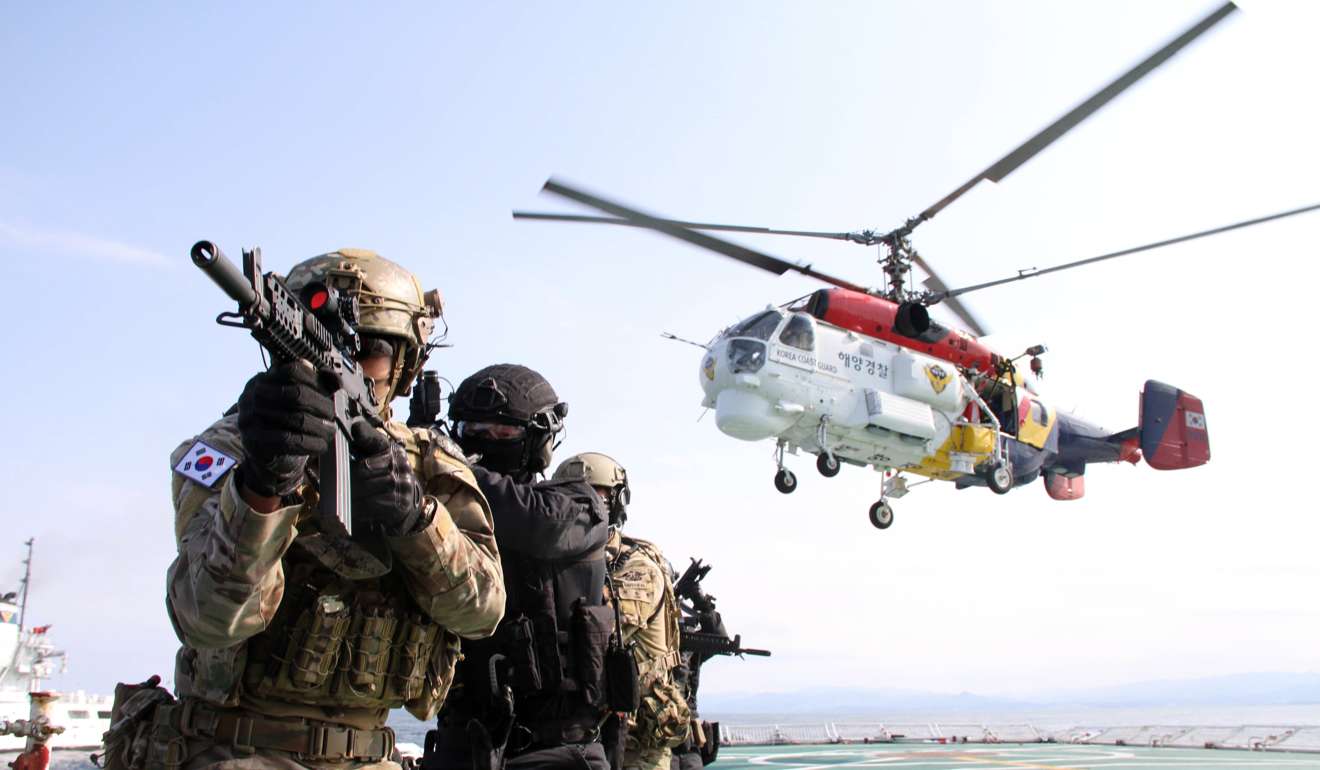
What new weapons can China unleash against US missile shield?
China vows live-fire drills and weapons tests in response to THAAD deployment in South Korea
China says it will conduct live-fire drills and test new weapons to safeguard its security in response to the US deployment of an anti-missile system in South Korea.
Defence ministry spokesman Yang Yujun on Thursday said that China resolutely opposed the deployment of the Terminal High-Altitude Area Defence (THAAD) system in South Korea, as it would undermine regional stability.
“The Chinese military will continue to conduct practical targeted live-fire drills, as well as test new weapons and equipment, to defend national security and regional peace and stability,” he said.
Yang’s remarks came amid reports on Wednesday that the US had started to move parts of the THAAD system to their deployment site in South Korea.

Beijing-based military analyst Li Jie said Yang’s comments were meant to remind the US and South Korea that China could take measures, including “hard and soft kill” weapons, to destroy the THAAD system.
“China can use its traditional Dongfeng series short and medium-range missiles as hard-kill weapons in case there is a war,” Li said. “For soft-kill, it means it’s possible that Beijing may try using electromagnetic pulse warheads as well as electronic interference technologies to disrupt the radar system of THAAD.”
Seoul says the anti-missile system is necessary because of provocations from North Korea.
Yang’s warning came a day after the Chinese and Russian militaries held their third round of anti-missile briefings in Moscow. Both sides reiterated their strong opposition to seeing the US THAAD system in the region.

“The message sent by China and Russia is very clear, they are joining together to deal with the THAAD deployment,” Li said.
This month, Russian air defence commander Viktor Gumyonny told media that Russia planned to network its next generation S-500 surface-to-air missile with its other missile systems as part of an integrated air-defence network to counter THAAD.
Zhou Chenming of the Knowfar Institute for Strategic and Defence Studies said the Sino-Russian briefing served to let the US and South Korea know that the two countries were strong enought to cope with THAAD, and to warn Japan and Taiwan not to get involved in the US-built defence network.
Japan is considering becoming the second US ally in Asia to deploy the THAAD system, citing the nuclear threat from North Korea.
Beijing is also worried that Taiwanese President Tsai Ing-wen and her independence-leaning Democratic Progressive Party might follow in Japan’s footsteps, because the mainland has targeted the island with more than 2,000 missiles.

